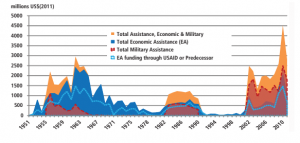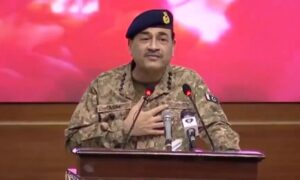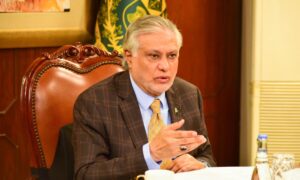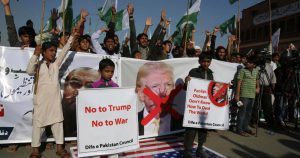
In a sudden move, US government frizzed $255 million military aid to Pakistan and the fate of such assistance will depend on Islamabad’s response to terrorism on its soil, stated the White House. In an explosive tweet, US President Donald Trump twitted, “The United States has foolishly given Pakistan more than 33 billion dollars in aid over the last 15 years, and they have given us nothing but lies & deceit, thinking of our leaders as fools. They give safe haven to the terrorists we hunt in Afghanistan, with little help. No more!”
It has a huge implication on the geopolitical chess game especially in the South Asia. Before delving into the detail, there is a need to focus on how US allowed Pakistan to divert the funds.
With increasing assertiveness of China in South Asia, Trump’s step to block military aid to Pakistan is giving a strong message to the non-state players who are harbouring and thriving in Pakistan. With each passing days, Pakistan is tilting towards China. While ignoring the most pressing problem, Pakistan has emerged as a hotbed of state-sponsored terrorism and waging a low-intensity war against its immediate neighbours in the last couple of decades.
It is evident that USA and Pakistan have a cordial relationship in the past and frequently they supported each other at the global platforms. After 9/11, Pakistan had emerged as an important ally of USA in the War against Terror. With help from Pakistan, Washington and its allies fought against Al-Qaida’s terror network. Ironically, Osama bin Laden was harboured in the centre of Pakistan and it stunned the entire world. Pakistan exposed at the global level but USA continued its funding! Actually, it’s a sheer ignorance because USA must stop such funding when Osama bin Laden surfaced and killed in a fierce gun battle in Pakistan. This instance gave concrete evidence to the entire world that Pakistan is escalating the global terrorism with help from various tactics. Additionally, it’s adequately documented that Pakistan served as a source for nuclear materials sent to Iran, North Korea and Libya.
Since a significant amount of aid is diverted in Pakistan, there is a lack of a comprehensive study on it. This topic seems very polemic and intertwined with the national interests. Institutions and researchers avoided it deliberately. But several news reports lagged the gap while exposing the notorious nexus.
In this backdrop, Impact News is shedding light on US Aid to Pakistan in the last one decade and how Pakistan diverted a large chunk of foreign aid.
Assessing Pakistan’s Progress Relative to South Asian Countries
The Human Development Index (HDI) is a key development indicator for countries which measures of achievements in three key dimensions of human development: a long and healthy life, access to knowledge and a decent standard of living.
According to the briefing note for countries on the 2016 Human Development Report, Pakistan, Bangladesh and India experienced different degrees of progress toward increasing their HDIs during the period between 1990 and 2015. Pakistan fared badly on the development front as the following graph shows. It depicts a glooming picture of human development.
HDI trends for Pakistan, Bangladesh and India: 1990-2015
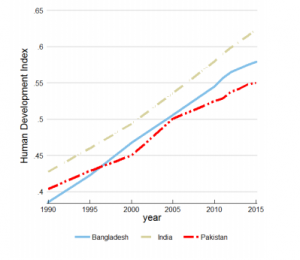
Source: UNDP
Pakistan’s Economic Profile Briefly:
1: GDP (Purchasing Power Parity):
$986.3 billion (2016 est.)
$931.9 billion (2015 est.)
$885.9 billion (2014 est.)
Note: data are in 2016 dollars data are for fiscal years
2: GDP – Composition, by Sector of Origin:
Agriculture: 24.6%
Industry: 19.4%
Services: 56% (2016 est.)
3: Unemployment Rate:
6 % (2016 est.)
5.9% (2015 est.)
Note: substantial underemployment exists
4: Labor Force by Occupation:
Agriculture: 42.3%
Industry: 22.6%
Services: 35.1% (FY2015 est.)
(Source: https://www.cia.gov/Library/publications/the-world-factbook/geos/print_pk.html )
Donor Landscape in Pakistan:
In order to gain a holistic picture of the donor landscape, United Nations in Pakistan conducted a comprehensive mapping of donor activities and the development of donor profiles. Understanding of the programmatic focus of the donor community and funding trends in Pakistan, this study was focused on development and humanitarian support. According to the study, “However, funding channeled through public diplomacy or political departments of embassies is not included.
Major Aid Donors to Pakistan:
| S.N. | Donors | Sectors/Thematic Areas |
| 1: | Asian Development Bank (ADB) | 1. Investment and Reforms in Energy and Infrastructure 2. Reforms to Strengthen Governance and Promote Structural Transformation 3. Development of Urban Services 4. Effective Implementation of Projects and Programs and Capacity Building |
| 2: | Australian Agency for International Development (AusAID) | 1. Education and Health 2. Humanitarian and disaster preparedness and response 3. Economic development 4. Governance 5. General development support |
| 3: | Canadian International Development Agency (CIDA) | 1. Education 2. Economic Growth |
| 4: | UK Department for International Development (DfID) | 1. Building peace and stability 2. Making democracy work 3. Promoting macroeconomic stability, growth and jobs 4. Effective delivery of public services |
| 5: | The Netherlands (Dutch) | 1. Human security, rule of law and human rights 2. Promotion of trade and investment under the slogan: from aid to trade |
| 6: | European Union (EU) | 1. Livelihood 2. Formal & vocational Education |
| 7: | Norway | 1. Fight poverty and bring about social justice 2. Governance 3. Education 4. Rural development, women and gender equality and human rights 5. Culture, peace and reconciliation, disaster prevention and preparedness |
| 8: | Germany | 1. Good governance 2. Energy 3. Education/vocational training 4. Health |
| 9: | Japan International Cooperation Agency (JICA) | 1: Ensuring human security and human development 2. Development of sound market economy 3. Achievement of balanced regional socio-economic development |
| 10: | US Agency for International Development (USAID) | 1: Increasing the capacity and efficiency of power and energy sector 2. Fostering private sector-led economic growth and agriculture 3. Supporting stabilization efforts in regions susceptible to activity by violent extremists, particularly on the border with Afghanistan 4. Increasing access to and the quality of education 5. Health care |
| 11: | The World Bank | 1. Economic governance 2. Human development and social protection 3. Infrastructure to support growth 4. Security and reducing the risk of conflict |
(Source: http://www.un.org.pk)
It is interesting to note that this study did not list Chinese aid to Pakistan. Ironically, China is lavishing a huge amount of aid to Pakistan in the recent past. Its involvement in Pakistan is quite apparent and increasing rapidly. Following US decision to block the military aid, Geng Shuang, spokesperson of China’s foreign ministry gave a “character certificate” quickly, “Pakistan has made enormous efforts and sacrifice for the fight against terrorism and has made very outstanding contribution to the global cause of counter terrorism.” Writing in the Huffington Post, Daniel Wagner CEO of Country Risk Solutions prophetically stated that China will not replace US aid. Wagner “Pakistan has received more than $20 billion in U.S. economic and military aid since 2001. Although $7.5 billion in additional aid was promised by the Obama Administration between 2010 and 2014, only $180 million of the first tranche of $1.5 billion was delivered as of the end of last year.”
US Assistance to Pakistan
(Source: US Development Assistance to Pakistan: 2014 and Beyond, Center for Global Development)
The Center for Global Development (CGD) published a report on US Assistance to Pakistan. Going through the report, American assistance to Pakistan varies from one decade to another. In the early years, economic and military assistance dominated which again increased suddenly during the early 1980s to the early 1990s. Then it slowed for more than one decade. It increased substantially in the backdrop of 9/11. Since then, US Assistance to Pakistan registered an impressive growth. The successive governments increased the aid irrespective of their political leanings. Another interesting aspect of the foreign aid in Pakistan is assistance by the Islamic countries like Saudi Arabia.
On March 27, 2009, Barack Obama, Former US President noted, ‘‘Multiple intelligence estimates have warned that al Qaeda is actively planning attacks on the United States homeland from its safe haven in Pakistan.’’ Ironically, Obama signed the Enhanced Partnership with Pakistan Act in October 2009 which is popularly known as Kerry Lugar Bill.
With shifting the geo-political contours, American government has decided to scrap the aid in order to create more pressure on Pakistan. China and Pakistan are engaged in several diplomatic, military and economic relations. One of them is China-Pakistan Economic Corridor (CPEC). Chinese Government announced investment of $31.5 billion in Pakistan mainly for energy, infrastructure and port expansion for Gwadar. After reviewing a huge number of documents and news items, I’m concluding that foreign aids to Pakistan are intrinsically associated with a larger geo-political agenda of the donor countries. Pakistan will remain a recipient of the foreign aids while ignoring its pressing problems.


